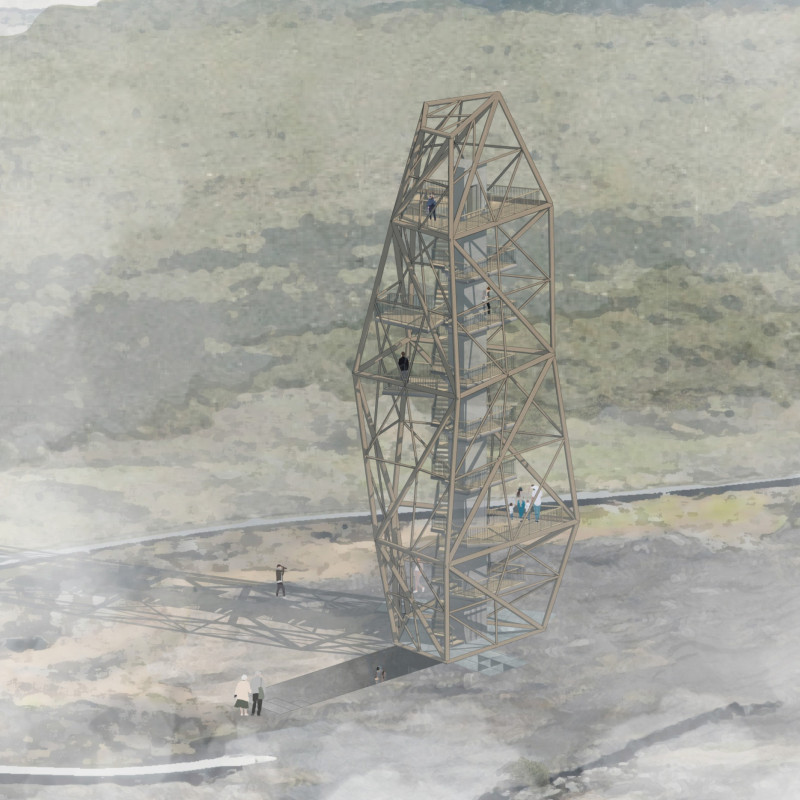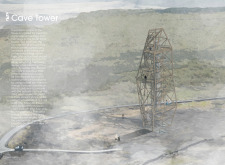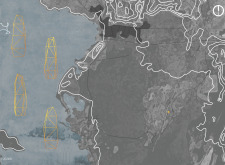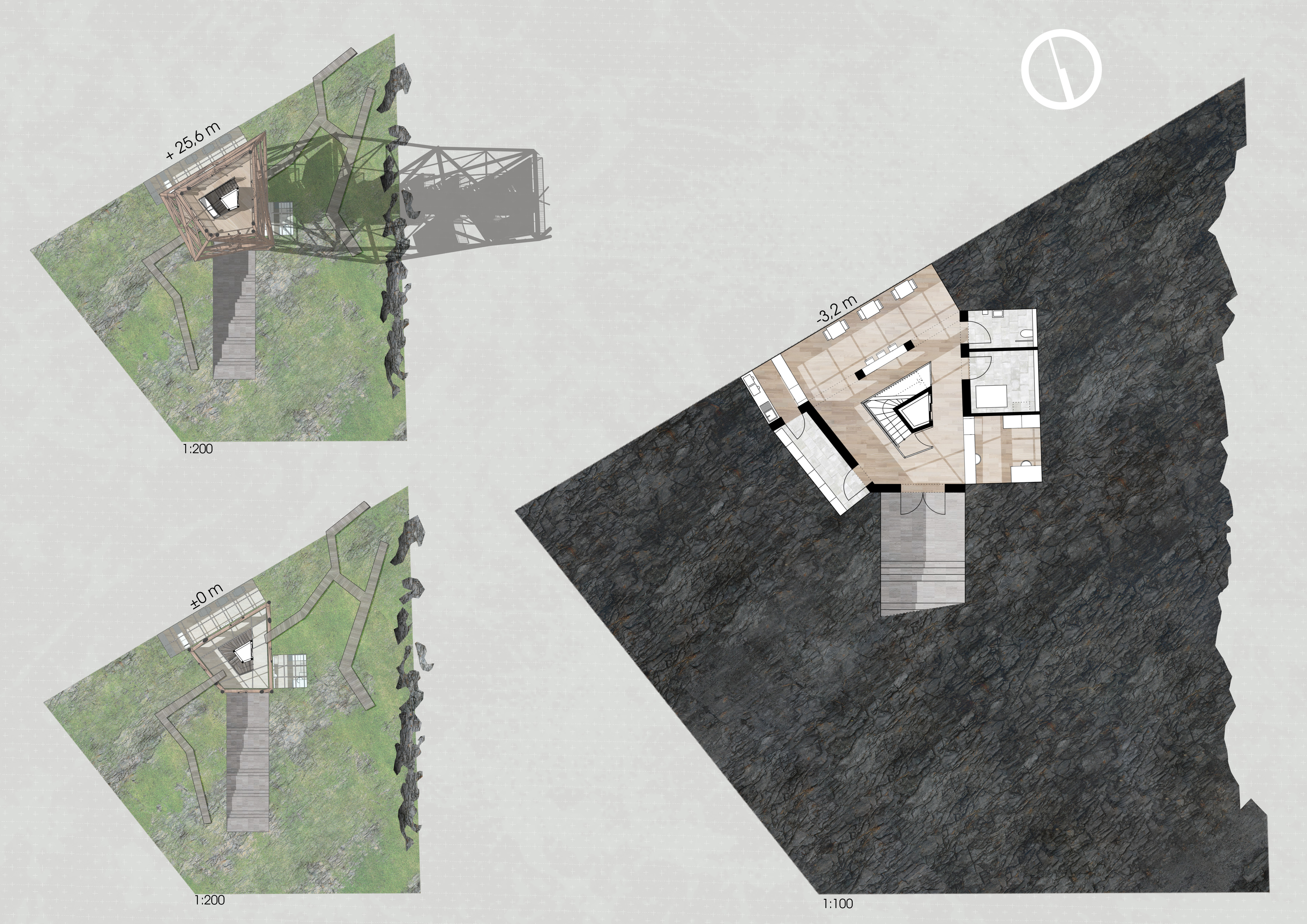5 key facts about this project
The Cave Tower project represents a thoughtful design that connects closely to its Icelandic environment. It serves as a place for visitors, drawing from the area’s mythology and rugged landscape to create a unique architectural landmark. The design emphasizes a minimized footprint, which allows it to blend into the natural surroundings while enhancing visitor interaction with the landscape.
Design Concept
The design focuses on respecting the geography of Iceland. By keeping the structure's size small, it aims to create a landmark that complements the striking terrain. The goal is to provide functional spaces while ensuring that the built environment does not overshadow nature. This careful balance highlights an understanding of the local context and its significance.
Subterranean Functionality
An important aspect of the design is the inclusion of a third cave that houses essential functional areas. This underground space is heated using natural geothermal energy, which highlights a practical and sustainable approach. The shape of the artificial cave is designed to be straightforward, using the bedrock as walls. This choice helps it integrate well into the surrounding area without competing with natural caves.
Open Structures
The above-ground section of the Tower features an open wooden structure. This design allows for platforms that give visitors different views of the landscape. By encouraging people to explore from various angles, the structure promotes a deep connection with the environment. The top platform offers a wide view, allowing visitors to appreciate the beauty of Iceland's scenery.
Cultural Integration
In the end, the Cave Tower shows how functionality and aesthetic considerations can work together. It draws from local culture while focusing on the visitor experience. The details in the design work in harmony with the landscape, creating a space that invites exploration and appreciation. At the top platform, visitors can take in expansive views, engaging fully with the environment around them.






















































